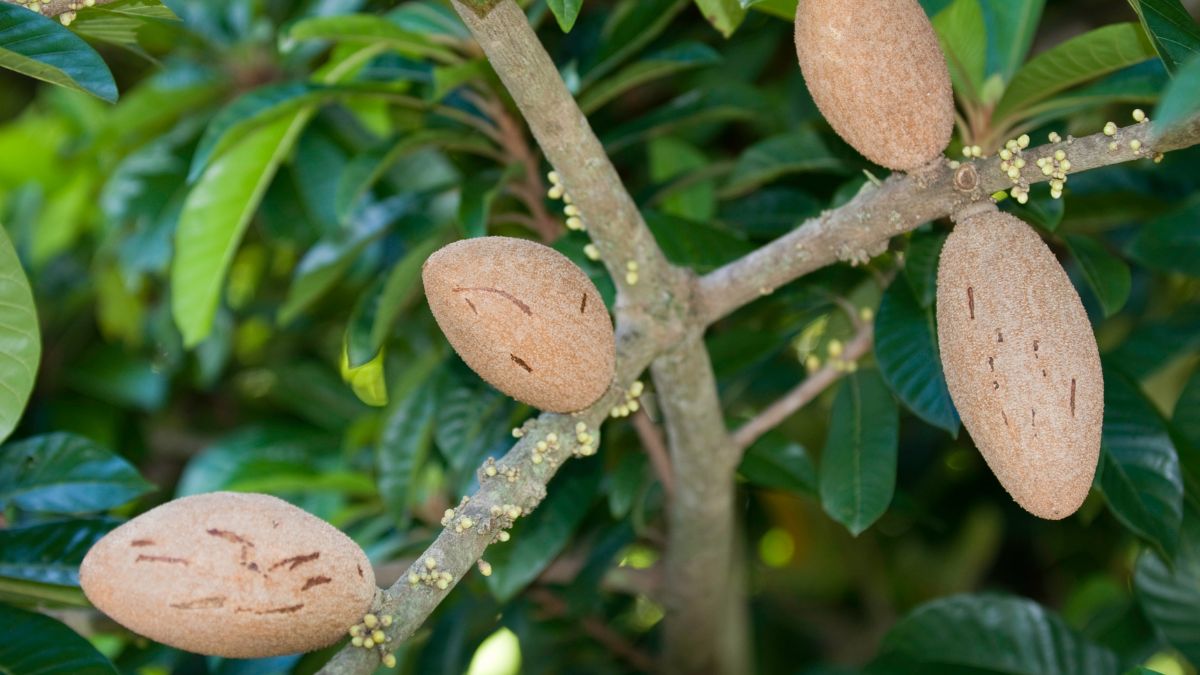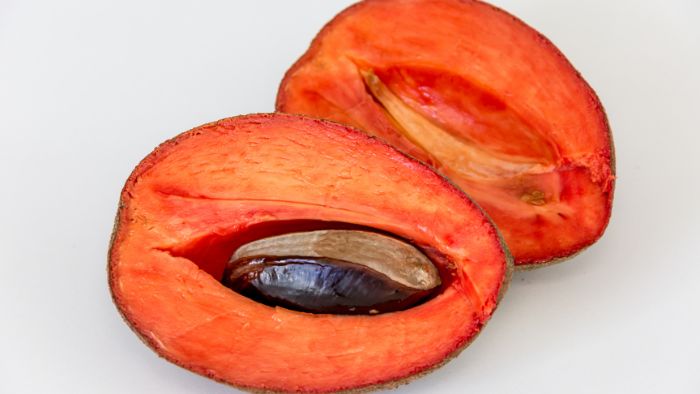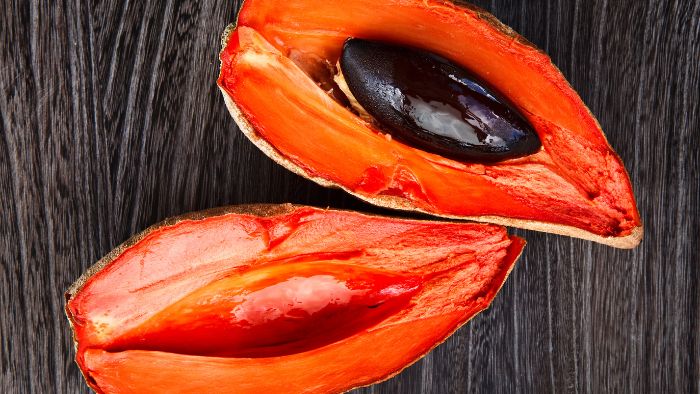Last Updated on November 15, 2022 by Guillermina
Wondering How to Grow a Mamey Tree? This blog post has all the information you need and much more! This plant is known for the tasty fruit with distinctive flavors that it produces and is therefore sought after by many gardeners. Its taste is compared to sweetened almonds as it is said to be quite similar.
These trees flourish throughout the West Indies and southern Florida in addition to their original habitats in Mexico and Central America. They grow well in USDA plant hardiness zones 9 through 11 with the proper care and maintenance. This is because they require protection from outside temperatures of 32 F or lower as they don’t fare well in these conditions.
Outside of the mamey tree growing zone, these plants can also be cultivated in pots. Although commercial plantings routinely graft selected strains onto seedlings for uniform fruit output, mamey is traditionally cultivated from seed. Find out more about how to grow these beneficial fruit plants below.
Does Mamey Grow True To Seed?
No, mamey does not grow true to seed. This plant is a huge fruit that is actually a berry in terms of its shape. It can reach heights of up to 42 meters if properly maintained. The maximum size of its leaves grows to about 12 by 4 inches. Although the tree is an evergreen plant, during some winters it may lose its leaves. Keep in mind that adult trees can’t withstand temperatures below 22 F while new ones will perish at 32 F
The tree doesn’t sprout from the seed exactly. The ones developed through grafting can begin bearing fruit in three to five years. However, the trees planted from seed require seven years of growth before they do. Though exceptionally larger plants may quadruple their yield, the typical tree will bear 200 to 500 fruits annually.
There are numerous cultivars with small that flower at various times of the year. The average fruit size is comparable to that of an extra-large potato. In actuality, the russet-brown skin is thick and rough, giving it a sweet potato-like appearance. The fruit is typically plucked and sent while just partially ripe because it bruises badly when fully ripened. Knowing how to grow a mamey tree will have effective benefits that offer great harvests.
What Is The Best Fertilizer For Mamey Trees?
If you know how to grow a mamey tree, you should have no problems when it comes to your plant’s health. This tree is an ever-giving fruit bearer that needs proper maintenance and care to thrive. For this reason, feeding your plant timeously is highly recommended if you’re looking forward to abundant yields.
Therefore, for the first three years, it is best to use an 8-3-9 fertilizer formula to feed your tree. This should be done from March to September for the best results. It is also advisable to follow application ratios according to the instructions on the fertilizer packaging. After this period of time, you can stop feeding it as your plant would be established enough to thrive without fertilizer.
You can also opt to use a foliar spray containing zinc and manganese every six weeks in locations with calcareous soil. The tree can grow to a magnificent height under ideal conditions. Remember that mameys can also be potted in zones 9 and lower but are best for outdoor cultivation in zones 10 to 12.
Is Mamey Self-Pollinating?
Mamey trees are quite fertile as with just one plant, you can get fruit. A second tree will, however, significantly boost the size of your produce. So, the answer is yes, mamey is a self-pollinating plant that thrives in the right conditions. However, having the correct knowledge about how to grow mamey trees is essential to keep them thriving.
Places like Florida and the tropics both have commercial cultivation of this enormous tropical berry. Listed below are a few tips about these hardy trees that would be quite useful if you’re planning on growing them.
Tips:
The trees can yield hundreds of fruits annually and are simple to grow.
Peach, sweet potato, and honey flavors are present in their creamy pink to orange flesh, which also has a faint almond nuttiness.
These plants have long, oblong leaves that are deeply ribbed and dark green.
Since they self-pollinate, grafted trees can bear fruit in three to five years.
You can plant a mamey tree in a container if you have a small yard or live somewhere with icy winters.
Utilize potting soil with perlite for drainage and a 3 to 5-gallon pot with drainage holes as a base when growing them.
It is best to place the tree outside in direct sunlight.
Keep the Mamey tree in a bright, south-facing window if you’re growing it inside.
When the temperature falls below 40F, bring outdoor potted mamey plants inside for safekeeping.
How do you Plant Mamey Seeds?
If you’re aiming for an abundant yield then you have to know how to grow a mamey tree for favorable results. This is because although planting them from seed is quite easy, there are a few simple steps that you should follow to ensure that you are doing it correctly. Keep in mind that sand is a common component of soil in tropical areas.
If the soil is too sandy, amending it would create a fertile environment for your plant. To give the tree enough room to flourish, plant it at least 20 to 30 feet away from any other trees. Follow the simple planting steps below for your mamey tree.
Steps:
1. Remove the Seed – You would first need to remove the seed from a mature mamey fruit by carefully slicing it open lengthwise and taking off the pulp. Keep in mind that large fruits can contain up to four seeds. Thereafter, you should wash the seeds to remove any leftover pulp and dry them.
2. Remove the seed coat – If you find that a crack has appeared in the seed coat, remove the top board and examine it. If you don’t see a crack, apply more pressure until you notice a tiny break in the seed.
3. Planting – A well-draining soilless potting mix should be filled in the plant container leaving 1/2 inch of the rim free. Place the seed in the center of the container and cover it with soil, pressing firmly. Thereafter, the container should be well-watered.
4. Germination – Keep the potting mix moist but not soggy and place the hydrated container in partial shade. Keep an eye out for germination, which ought to happen 40 to 70 days after planting. After germination, keep the seedling well-watered and set the container in full sun.
5. Transplanting – When the roots extend all the way to the bottom of the pot, transplant the seedling into a larger container. Before doing this, ensure that the roots have not already started to coil around in the container’s bottom.
6. Fertilizer – Fertilize the seedling with a fruit tree formulation for the first few years to get the best results.
5. Pruning – Mamey trees growing in containers should be kept clipped to keep them in check. This will also ensure that they thrive and bear larger fruit.
Click on the video to learn more about growing these magnificent fruit trees.
Conclusion
When growing mamey trees, you should keep in mind that they can have both developing and mature fruits because of the time they take to mature. The type of plant you’re cultivating will also determine its yield capabilities. The fruit is ready for picking if the exposed flesh is becoming orange or red. To be fit for consumption, it must ripen for a few days at room temperature after harvesting.
If you don’t know how to grow a mamey tree, then inconsistent germination can become a common problem. Also, keep an eye out for fungal infections on seedlings and apply fungicide as needed. You should also know that the seeds of this plant are poisonous and the milky sap irritates the skin and eyes and may result in an allergic reaction.
When handling the tree, its fruits, or its seeds, always put on protective gloves and safety goggles. The mamey tree can thrive in a wide range of pH levels and soil conditions, but it cannot tolerate waterlogged roots. The roots of a tree soon start to rot when they are exposed to extremely damp soil conditions for a lengthy period of time. If you want more information about growing mamey trees, here’s an additional insight from the University of Florida.



